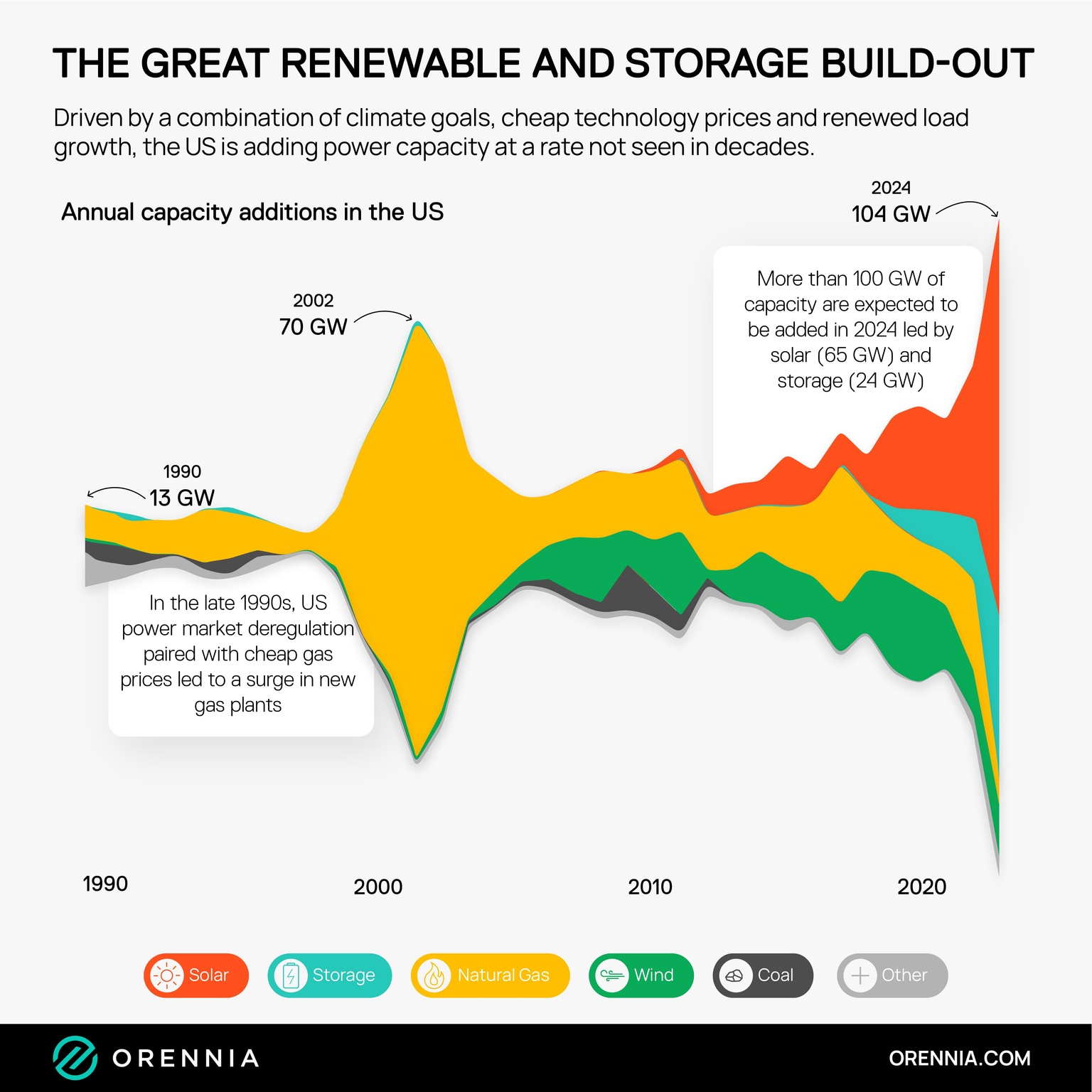
Aaron Foyer
Vice President, Research and Analytics

Aaron Foyer
Vice President, Research and Analytics

The landscape of electricity generation in the United States has undergone significant transformations over the past few decades. The timeline showcases the shifts in energy policy, technological advancements, and market demands that have shaped the US’ energy mix.
In the late 1990s and early 2000s, the US witnessed a substantial capacity buildout, particularly natural gas combined-cycle plants. This was largely driven by the deregulation of power markets, advances in natural gas production technologies, and relatively low-cost, high-efficiency natural gas-fired power plants. Gas quickly became the preferred choice for new electricity generation due to its ability to provide reliable and flexible power.
This era marked a significant transition from the dominance of coal to the rise of natural gas in the energy sector.
Entering the 2020s, the energy landscape began to shift once again, driven by a growing emphasis on sustainability and the need to combat climate change. This decade has seen a remarkable increase in capacity growth from wind and particularly solar, alongside the rapid deployment of battery storage systems. The factors that have contributed to the renewable revolution include technological advancements, policy and incentives, environmental concerns and declining costs.
Battery storage systems have emerged recently following a decade of cost reductions and increased price volatility. These systems provide the flexibility to store excess energy generated during periods of high production and dispatch it during times of high demand or low generation. This capability addresses the intermittent nature of renewable energy sources and improves grid reliability.
Bottom line: From the dominance of natural gas in the early 2000s to the rapid growth of renewables and batteries in the 2020s, this journey underscores the dynamic and ever-evolving nature of the energy sector.
Data-driven insights delivered to your inbox.